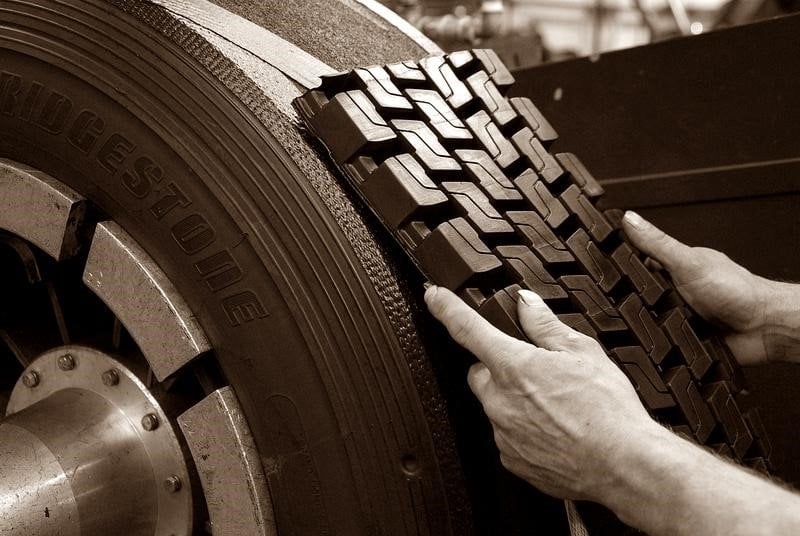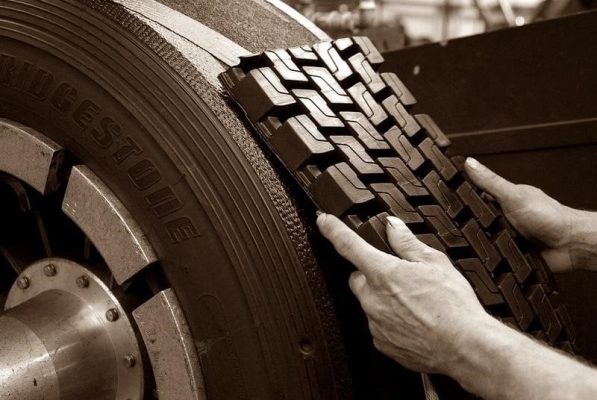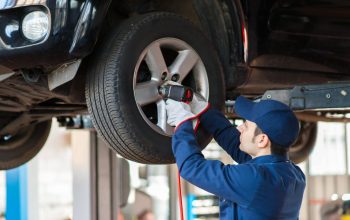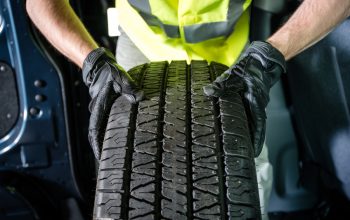4 Surprising Benefits of Tire Retreading
When it comes to commercial hauling operations, the two greatest expenses are fuel and tires. The medium trucks used for most major trucking fleets, such as waste management trucks, postal service vehicles, public transportation, etc, go through tires quickly, and the cost to replace those tires with new ones can be substantial.
Tire retreading offers great benefits to commercial truck and mining companies beyond the cost savings as well. Retreading tires reduces the company’s carbon footprint, reduces the overall operating budget, uses less oil than in the production of new tires, and reuses tire casings, keeping hazardous materials out of our landfills.
For many, tire retreading is a misunderstood trade. To gain a better understanding of the process and the overall benefits of the retreading of commercial and OTR tires, we visited Kal Tire’s Tire Retread Plant for a behind-the-scenes look at how it all works. Here are just 4 of the benefits of tire retreading that we discovered along the way.
1) Retread tires are far less expensive than new tires.
One new commercial tire can cost upwards of $500. This cost can add up quickly when you’re replacing a whole fleet of truck tires on a regular basis. By retreading worn-out tires, companies can enjoy a premier product, without paying the premium cost of a new tire, saving 60-70% in tire costs and greatly reducing the company’s overall operating budget.

2) Retreading tires is more environmentally friendly.
The process of tire retreading involves replacing the worn-out layer of rubber on the top of the tire. 60-70% of the materials in a new tire are reused. Saving the majority of the casing materials and only replacing the rubber keeps those additional tire materials out of landfills, reusing them instead of disposing of them when purchasing newly-produced tires.
Retread tires also use significantly less oil. According to the Environmental Protection Agency, “retreading a tire takes 7 gallons of oil compared to 22 gallons for making an entirely new tire. And with an estimated 24 million retread tires sold every year, retread tires save on average 360 million gallons of oil per year.” (Source)
3) Retread tires are road safe.
When tires are received for retreading, they go through a rigorous 7-point inspection process before the retreading even begins. Great attention to detail goes into ensuring the retread tires are being produced in a safe manner, with quality checks occurring every step of the way. For this reason, most tires can be safely retreaded up to three times before the tire has come to the end of its life.
Myth Buster: While some people believe that the tire remnants seen on the side of the road are a direct result of retreads, this is not the case. In fact, most of that discarded tire rubber is from new tires. You can tell by looking closely at the makeup of those tire pieces. You’ll see that many have bits of steel in them – a material that is not used in the retreading process and is only present in new tire casings.
4) Retread tires last as long as new tires.
Not only does retreading extend the life of a tire, but it can double and even triple the life of the same tire as a tire can be retreaded up to 2-3 times before that tire is done. A new tire can last around 3-4 years (depending on distance driven, maintenance, etc). A retread tire can last equally as long with the proper maintenance, proven to perform equally in any condition.
Can regular car tires be retread too? While it is possible to retread the tires of passenger vehicles, the cost to do so is equal if not more than purchasing new car tires, so it is definitely a less popular option.
Want to see how it all works? Check out this short video of our tour of Kal Tire’s retread plant:
Tire retreading for commercial trucks is a service offered in various locations across the province. Visit the following partners for more information:



